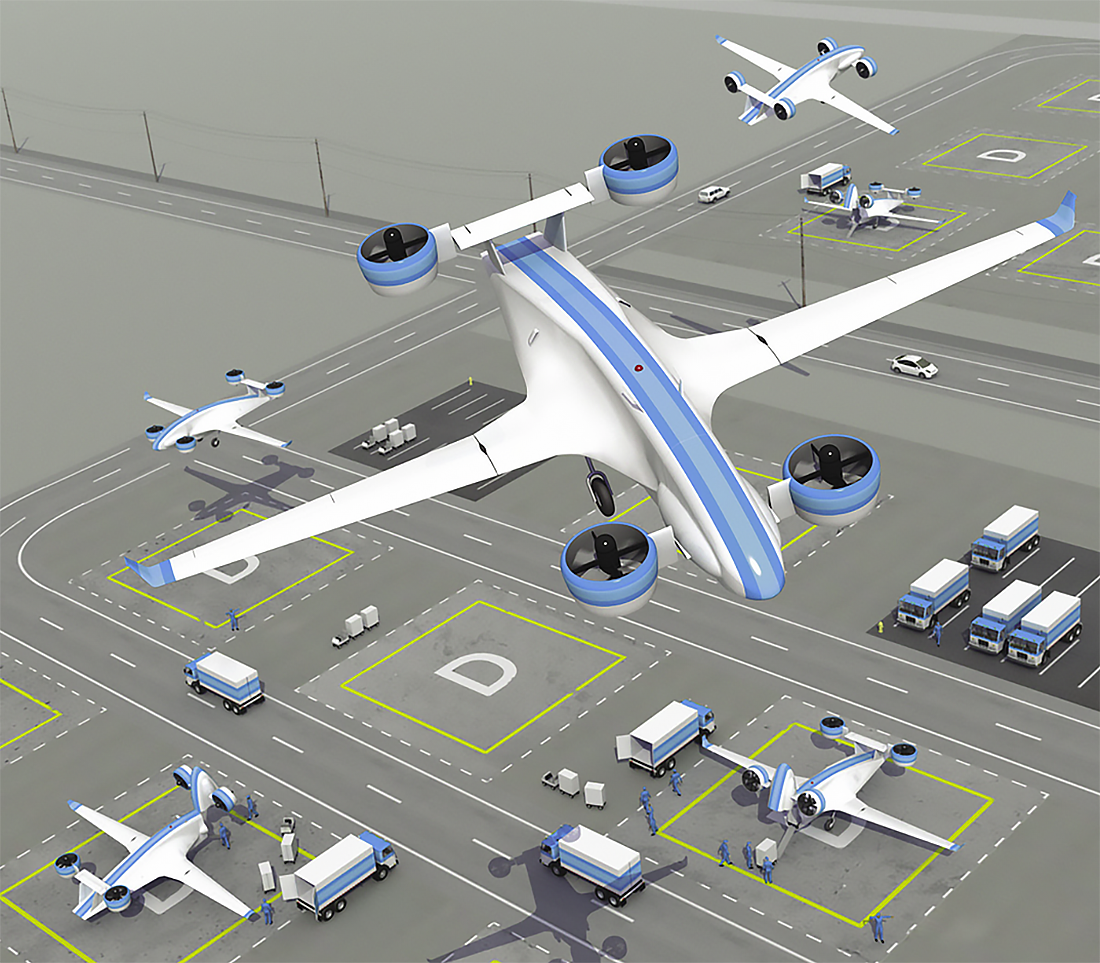Click Here to View This Page on Production Frontend
Click Here to Export Node Content
Click Here to View Printer-Friendly Version (Raw Backend)
Note: front-end display has links to styled print versions.
Content Node ID: 419757
Uncrewed air vehicles promising a trifecta of four-digit payload and range plus markedly lower operating costs compared with fixed-wing aircraft carry the potential to significantly reshape the air freight business. Sabrewing is in pursuit of this Holy Grail with its hybrid-electric Rhaegal design and now the California-based company is looking to further boost performance with a switch to a more powerful Ardiden turboshaft engine provided by helicopter engine manufacturer Safran.
The Sabrewing team is now building the first full-scale prototype of the Rhaegal B aircraft, which is expected to carry a 5,400-pound payload when operated in VTOL mode, rising to 10,000 pounds for a conventional takeoff from a 300-foot runway. According to chairman and CEO Ed De Reyes, this could deliver CTOL operating costs of just 28 cents per ton/mile, or 54 cents for VTOL operations.
Based on extensive tests with a smaller Rhaegal A technology demonstrator, Sabrewing’s engineers have decided to use a pair of 1,400- to 2,000-hp Ardiden 3 engines for the B model in place of Safran’s less powerful Ariel 2E turboshaft. The engines will be able to run on sustainable aviation fuel and will power a generator producing nearly 1 MW of electrical power to run the aircraft’s four ducted fans. An added benefit of the Ardiden powerplant, which already powers larger helicopters, is that it has higher safety redundancy levels than are required for type certification under Part 23 rules.
The aircraft would fly to a range of 1,000 nm (1,800 km) while operating at speeds of up to 200 kts (368 km/h) and an altitude of 22,000 feet. The aircraft will be able to carry four standard ULD-2 containers, which are convenient for air cargo carriers looking to standardize their loading and unloading processes. It is also being designed to accommodate refrigerated containers, which is useful for missions such as delivering humanitarian food relief and some medical supplies.
Sabrewing says it now holds provisional launch orders backed by refundable deposits for 128 aircraft. Among them is a commitment for 26 Rhaegals from an operator that flies missions for the United Nations’ World Health/World Food program.
According to De Reyes, who used to work in the air freight business, a key factor in reducing operating costs is having aircraft with modest maintenance needs. “The entire aircraft is built of easily-replaceable modular parts and modules,” he explained to FutureFlight. “If a part needs to be replaced, access to even the most difficult parts of the aircraft is relatively easy when compared to helicopters or fixed-wing passenger-carrying aircraft.”
The company’s goal is that for required phase inspections any one of the aircraft’s five modules can be removed and replaced within 24 hours. In the case of time-sensitive phase checks, the specific module can be removed and replaced so that the aircraft can get back into service while the module is being inspected. The Rhaegal’s simple monocoque center wing body and tube frame are easy to repair if damages occur.
Recently, Sabrewing has received interest from prospective customers for the small Rhaegal A model, which it had not planned to put into production. Based on an improved design for its ducted fans, the company is now considering the case for switching from the Ariel 2E engine used for testing to a single Ardiden 3 turboshaft.
Progress with the type certification process that began in 2019 has been slowed by Covid interruptions and the FAA’s capacity to deal with new aircraft manufacturers. However, De Reyes said that the use of ‘digital twin’ engineering models that exactly match the performance of the actual aircraft has kept the program moving, and Sabrewing now intends to repeat the approach with the Rhaegal B model that it aims to start delivering in December 2023.
Now that Sabrewing has a full-scale Rhaegal A prototype it will conduct further hover flight tests before transitioning from vertical lift to horizontal cruise. New funding is now supporting the construction of the first Rhaegal B prototype.
De Reyes reported significant interest in the Rhaegal aircraft from possible military users. Like cargo operators, the forces are attracted by a robust aircraft with low-maintenance needs and the ability to keep flying in tough weather conditions.
